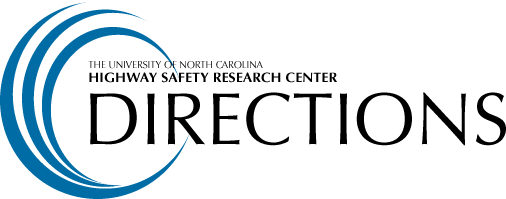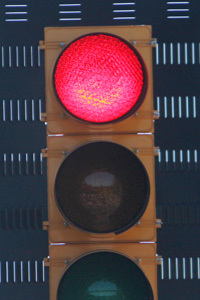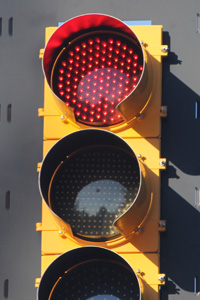

HSRC researchers study safety effects of traffic signal cost-saving measures


The HSRC study showed no significant decrease in safety, and one possible increase, when replacing incandescent bulbs in traffic lights (top) with LED ones.
LED traffic signals
Across the nation and here in North Carolina, transportation agencies have increasingly been converting the bulbs in our traffic signals from incandescent bulbs to light emitting diode (LED) bulbs. Much of this is driven by a requirement by the Department of Energy to meet ENERGY STAR requirements; however, LEDs are also a popular choice because they decrease costs by using less energy and because they have a longer life, requiring less maintenance.
While agencies are not typically making this change on the basis of expected safety benefits, they certainly are not expecting intersection safety to be compromised. “Surprisingly, two prior studies in Ohio and Tennessee found that LED bulbs significantly increased crash rates – one study found an increase of 71 percent and the other, 47 percent,” said UNC Highway Safety Research Center (HSRC) researcher Raghavan Srinivasan. “When you have results so dramatic, questions are raised.”
Because of these studies’ small sample sizes and other methodological limitations, HSRC researchers Srinivasan, Daniel Carter, Sarah Smith and Bo Lan decided to take their own look, a before-and-after analysis with a larger volume of data. They collected data from 282 LED signalized intersections in Charlotte, N.C., and more than 3,000 intersections in a comparison group. The team found that, at three-leg intersections there was no significant change in safety performance before and after the LED installations. At four-leg intersections, crash modification factors (CMF) for rear end crashes are lower than 1.0 and statistically significant, indicating a safety benefit for this crash type after the signals were converted to LEDs. The CMFs for other types of crashes at four-leg intersections were not statistically significant.
Srinivasan indicated that “there were substantial differences among the study sites in terms of the safety effects of the LEDs, which would call for future research to investigate whether LEDs are more or less beneficial depending on the characteristics of the intersection.”
Srinivasan says that characteristics of the intersection could include type of area, sight distance, traffic volume, presence of intersection lighting, and phasing scheme. Additionally, researchers in northern states should consider the effect of weather conditions – since LEDs do not emit heat, it has been reported that snow on and around the lights does not melt, sometimes blocking the view of the signal.
Late night flash operations
A second HSRC traffic signal study by Lan and Srinivasan found that converting late night flashing (LNF) operation to normal phasing operation resulted in a 48 percent reduction in total nighttime crashes, a 53 percent reduction in nighttime crashes resulting in injury and fatalities, and a 57 percent reduction in nighttime frontal impact crashes.
LNF operation is a practice in which traffic signals are operated in “flashing mode” when traffic volumes are low, typically during late night or early morning hours. Usually a flashing yellow signal is used to indicate “caution” on the major street and a flashing red signal is used on the intersecting minor street, which requires the driver to stop and proceed after yielding to traffic on the major road.
“While LNF flash operations saves electricity costs and reduces delay to drivers, it gives drivers the responsibility of looking for other traffic, and errors can happen,” said Srinivasan. “Removing such operations may cost drivers a little more time in some cases, but will improve safety.”
Previous studies also supported this conclusion, but the magnitude of crash reduction varied significantly (from 27 percent up to 78 percent fewer crashes) between studies. Using data for 61 intersections that were converted from LNF to normal phasing operation and 395 intersections that remained on LNF operation from 2000 to 2007, Lan and Srinivasan were able to develop more precise estimates of the crash reduction effects when LNF operations are removed.
Both traffic signal studies, funded by the Federal Highway Administration through the Highway Safety Information System project, were presented at the 2013 meeting of the Transportation Research Board, and will be published in the Transportation Research Record later this year.
The University of North Carolina Highway Safety Research Center
730 Martin Luther King Jr. Blvd, Suite 300 | Campus Box 3430 | Chapel Hill, NC 27599-3430
Phone: 919.962.2203 | Fax: 919.962.8710
http://www.hsrc.unc.edu